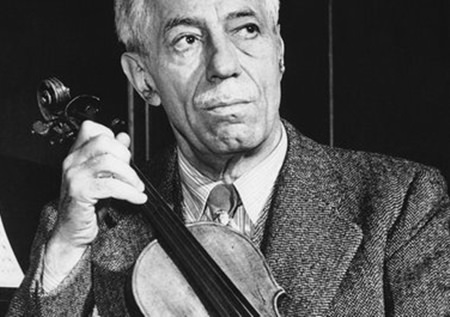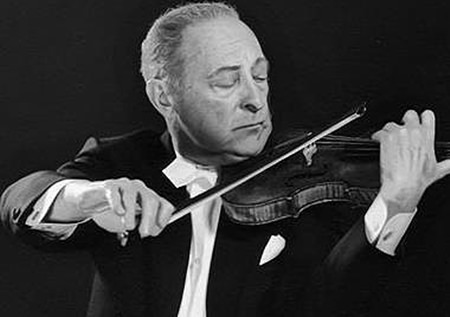
The other day I was chatting with some friends (yes, I do have some) about who were considered the world’s top violinists. This is a subject guaranteed to cause heated discussion especially among string players. All the usual names were dredged up but in some ways it was a fruitless exercise. For example, what criteria do you use? Technical ability would come near the top of the list, but that’s a broad category that includes things like mastery of bowing techniques, articulation, velocity, projection, dynamic control, tone quality and vibrato. And that’s just the start. And do you consider breadth and quality of repertoire, contributions to playing technique and stage presence?

The few musicians that are considered “great” acquire it because they also bring insights into the music that no one else has managed. It is a remarkably difficult thing to do, which is why there are comparatively few “great” musicians. It requires supreme intelligence, phenomenal memory and an intimate knowledge and understanding of the music.
Anyway, after a great deal of animated discussion everyone conceded that a list of top violinists would surely include the names Fritz Kreisler and Jascha Heifetz. They were both child prodigies; they both lived most of their lives in the twentieth century and both made many recordings. They set new standards for the art of violin playing and while Kreisler’s personal trademark was his sweet warm tone quality, Heifetz was more renowned for his incredible bowing ability and staggering virtuosity that remains unmatched to this day. They knew each other too, yet when Kreisler first heard the eleven-year-old Heifetz in 1912, he famously remarked, “We can all just break our fiddles over our knees.” Oddly enough, although Kreisler and Heifetz were born about twenty-six years apart they both entered the world on 2nd February.
Johannes Brahms (1833-1897): Violin Concerto in D major Op. 77. Fritz Kreisler (vln), London Symphony Orchestra cond. John Barbirolli (Duration: 37:11; sound only, no video)
Friedrich “Fritz” Kreisler (KRIZE-luh) was born in Vienna in 1875 and at the age of twelve he won the Premier Grand Prix de Rome gold medal competing against forty other players some of whom were almost twice his age. Most of his recordings were made between 1904 and 1946 but have since been digitally re-mastered and available on CDs. Today his playing style might sound a bit old-fashioned because he freely used a technique known as portamento which involves sliding between one note and another. It’s now considered rather dated and sentimental, yet in Kreisler’s time it was standard practice and thought to make the music sound more expressive.
Kreisler had relatively few concertos in his repertoire but he knew Brahms personally and so this performance must count as something special. It’s his only concerto for violin and dates from 1879. It was premiered the same year in Leipzig by the legendary Hungarian violinist Joseph Joachim with the composer conducting.
The Kreisler recording was made in 1936 when the violinist was in his sixties but it reveals the legendary Kreisler sound though perhaps not as rich as it once was. In the first movement there is a “magic minute” between 04:10 and 05:10 when the second theme appears on the solo violin. The cadenza at the end of the first movement was written by Kreisler himself and it is an amazing musical feat. There’s another magic moment at 19.15 just after the cadenza. But to my mind the whole work is full of wonderful moments so I’ll leave you to discover them for yourself.
Camille Saint-Saëns (1835-1921): Introduction and Rondo Capriccioso in A minor Op. 28. Jascha Heifetz (vln), Studio Orchestra cond. Alfred Newman (Duration: 08:40; Video: 720p)
Jascha Heifetz (HIGH- fets) has been described as “the most profoundly influential performing artist of all time”. That other great violinist Itzhak Perlman once wrote “The goals he set still remain today, and for violinists today it’s rather depressing that they may never really be attained again.”
Heifetz was a child prodigy born in 1901 in Vilna, Lithuania. He started violin at the age of five and later moved to America giving his teenage debut at Carnegie Hall to a rapturous audience. Heifetz had a dazzling technique as well as a remarkably beautiful tone quality. There are several films about Heifetz on YouTube.
This work for violin and orchestra dates from 1863 and was written for the virtuoso Spanish violinist Pablo de Sarasate. This recording is something of a curiosity, being taken from a 1939 movie entitled They Shall Have Music. The story follows a young ghetto boy who dreams of being a violinist like Heifetz. He first hears his idol after finding a ticket to Carnegie Hall on the pavement.
Heifetz plays magnificently and is clearly on top form. Watch out for some phenomenal playing at 07:12. And yes, that young man conducting so meticulously is the renowned Hollywood composer, Alfred Newman.
 |
 |
 |





